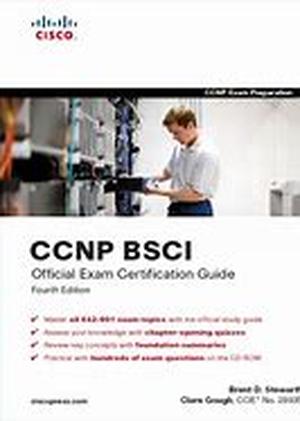
Summarizing Routes Is A Vital Skill To Learn To Pass The BSCI Exam And Get One Step Closer To Earning Your CCNP. The Actual Binary Conversions Are Only Part Of The Test, Though! You've Got To Know How To Correctly Apply The Summary Routes, And That Differs From One Protocol To The Next. In The Last Few CCNP BSCI Tutorials, We've Looked At Using The "area Range" And "summary-address" Commands To Perform OSPF Route Summarization. Today, We'll Take A Look At Summarizing Routes In EIGRP.We'll Use The Following Four Loopback Addresses In This Example:Loopback 16, 16.16.16.16 32Loopback 17, 17.17.17.17 32Loopback 18, 18.18.18.18 32Loopback 19. 19.19.19.19 32On R1, We'll Place These Four Addresses Into EIGRP AS 100.R1(config-if)router Eigrp 100R1(config-router)network 16.16.16.16 0.0.0.0R1(config-router)network 17.17.17.17 0.0.0.0R1(config-router)network 18.18.18.18 0.0.0.0R1(config-router)network 19.19.19.19 0.0.0.0R3 Is An EIGRP Neighbor Of R1, And That Router's EIGRP Routing Table Now Looks Like This:R3show Ip Route Eigrp 17.0.0.032 Is Subnetted, 1 SubnetsD 17.17.17.17 902297856 Via 172.12.123.1, 00:00:29, Serial0 16.0.0.032 Is Subnetted, 1 SubnetsD 16.16.16.16 902297856 Via 172.12.123.1, 00:00:36, Serial0 19.0.0.032 Is Subnetted, 1 SubnetsD 19.19.19.19 902297856 Via 172.12.123.1, 00:00:08, Serial0 18.0.0.032 Is Subnetted, 1 SubnetsD 18.18.18.18 902297856 Via 172.12.123.1, 00:00:22, Serial0 To Perform Manual Route Summarization, Write Out The Network Addresses In Binary And Then Determine The Point At Which The Addresses No Longer Have A Bit In Common. For These Four Addresses, It Will Be Enough To Write Out The First Octet In Binary:1600010000170001000118000100101900010011Working From Left To Right, The Common Bits Are The First Six Bits - 000100xx. In Decimal, This Value Is 16. The Summary Mask Must Be Determined As Well, And That Value Is Derived From Putting A "1" In The Mask For Each Common Bit. With The First Six Bits All Set To One - 11111100 - The Resulting Mask Is 252.0.0.0. The Full Summary Address Is 16.0.0.0 252.0.0.0.In EIGRP, The Summary Address Is Actually Configured On An Interface, Not Under The Routing Process. R1(config)interface Serial0R1(config-if)ip Summary-address Eigrp 100 16.0.0.0 252.0.0.002:39:50: DUAL-5-NBRCHANGE: IP-EIGRP 100: Neighbor 172.12.123.3 (Serial0) Is Down: Summary Configured02:39:50: DUAL-5-NBRCHANGE: IP-EIGRP 100: Neighbor 172.12.123.2 (Serial0) Is Down: Summary Configured02:40:16: DUAL-5-NBRCHANGE: IP-EIGRP 100: Neighbor 172.12.123.2 (Serial0) Is Up : New Adjacency02:40:17: DUAL-5-NBRCHANGE: IP-EIGRP 100: Neighbor 172.12.123.3 (Serial0) Is Up: New AdjacencyThere's An Immediate Side Effect Here That Most Books Leave Out. Your EIGRP Adjacencies Are Going To Come Down After You Configure This Summary, But They Should Come Back Up Quickly. The Key Word There Is "should". If You Configure EIGRP Summary Addresses On A Production Network, You May Want To Do This During Non-peak Hours. The Timestamps On The Above Commands Indicate That The Adjacencies Were Down For About 27 Seconds Over The NBMA Network. That's About 30 Minutes In End-user Time. ;)Check R3's EIGRP Routing Table.R3show Ip Route EigrpD 16.0.0.06 902297856 Via 172.12.123.1, 00:01:46, Serial0The Four Summarized Routes Are No Longer In The Routing Table, And They Have Been Replaced By The Summary Route Shown At The Bottom Of The Routing Table. Notice The Mask Is 5, Which Is Prefix Notation For 248.0.0.0.Knowing How And Why To Summarize Routes Is A Valuable Skill, Regardless Of The Protocol In Use. But Before You Take The BSCI Exam On Your Way To The CCNP, Make Sure You Know How To Perform Summarization With All Of The Core Protocols!





